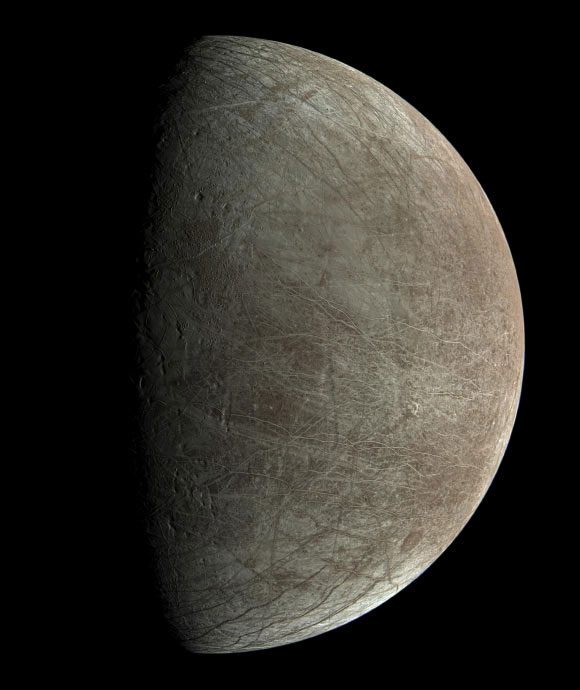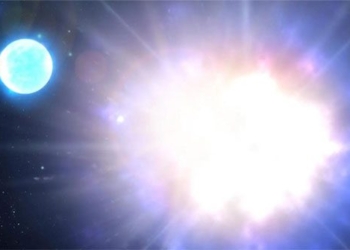A vibrant and warm “cradle of life,” much like what has occurred and continues to occur on Earth, has been evidenced in the seemingly lifeless extraterrestrial world of Europa.
Europa is a “giant ice block” orbiting Jupiter, but for a long time, NASA scientists have believed that the icy crust is merely a shell, beneath which lies an ocean teeming with life. Numerous studies have been conducted from missions approaching Europa and to support those missions, including recent research published in the Journal of Geophysical Research: Planets.
This work was coordinated by NASA’s Jet Propulsion Laboratory (JPL), the University of Oxford (UK), and Hokkaido University (Japan) to model existing data and explain how the icy shell of Europa may be rotating.

“The Life Moon” Europa of Jupiter – (Photo: NASA).
“When scientists compare images collected by the Europa Clipper spacecraft with those from the Galileo and Voyager missions, they can check the positions of the icy surfaces to see if they have changed,” said Dr. Hamish Hay from the University of Oxford.
Europa Clipper is a dedicated spacecraft designed to explore Europa, scheduled for launch by NASA in 2024, with the additional mission of searching for evidence of extraterrestrial life. Meanwhile, Galileo is a spacecraft that explored Jupiter, while Voyager was tasked with studying the distant regions at the edge of the Solar System.
According to Sci-News, they concluded that this rotation is controlled by the dynamics of the subsurface ocean, which also serves as evidence that this underground ocean is very similar to Earth’s oceans.
Previous studies have indicated that Europa’s ocean is heated from below through tidal heating and radioactive decay of its rocky core, while being cooled from above by its frozen surface.
The new model suggests that this must lead to convection, whereby heat is transported by warm and cold water currents moving up and down.
These water flows create alternating East-West ocean currents. At the ocean’s surface, these currents exert frictional forces on the ice, enabling the icy crust to rotate.
Conversely, the rotation of the icy shell also helps guide the currents of the subsurface ocean, causing them to move in an East-West or West-East direction.
This discovery not only amazes the scientific community regarding how a subsurface ocean can impact the icy crust of moons and planets with similar patterns but also enhances understanding of these ice-covered oceans.
This also provides further insights into Europa’s geological history, guiding NASA and its partners in their quest to explore a world that is expected to help them first make contact with extraterrestrial life. It will also serve as a remarkable foundation for studying other ocean worlds, including many exoplanets with similar structures that NASA has discovered.





















































